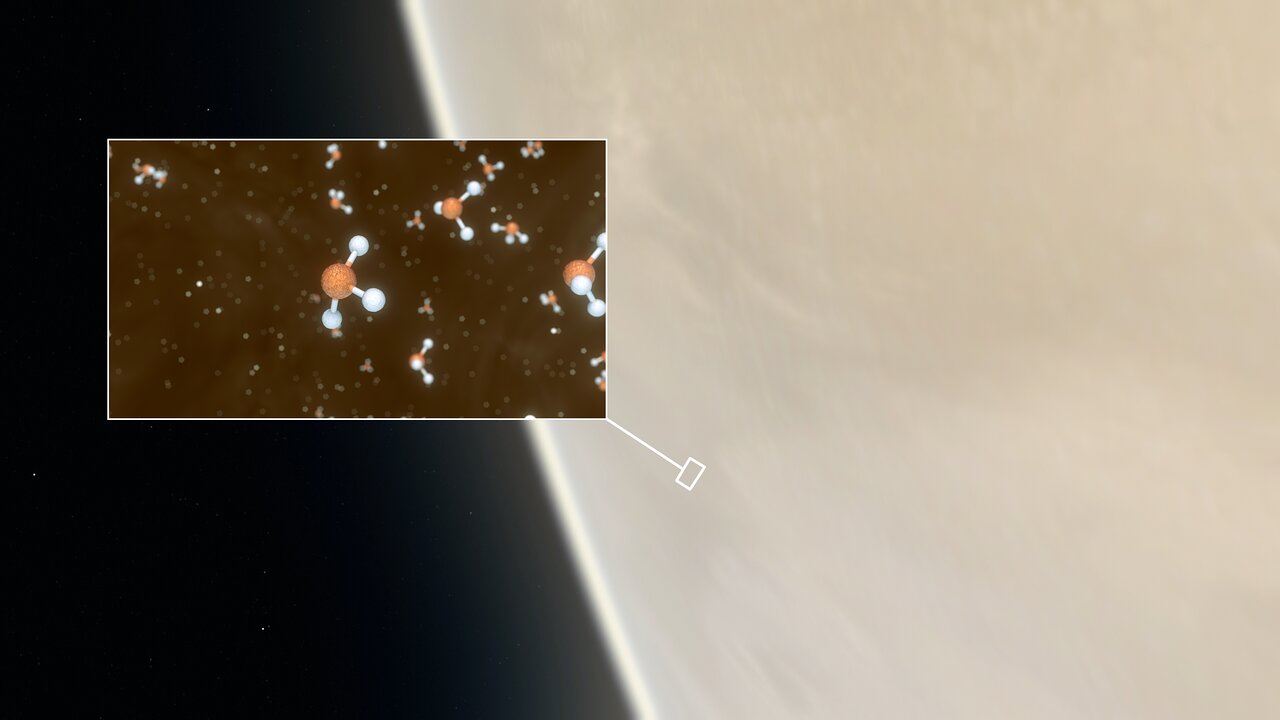ESO Science Release | ALMA | 2020 Sep 14
An international team of astronomers today announced the discovery of a rare molecule -- phosphine -- in the clouds of Venus. On Earth, this gas is only made industrially or by microbes that thrive in oxygen-free environments. Astronomers have speculated for decades that high clouds on Venus could offer a home for microbes -- floating free of the scorching surface but needing to tolerate very high acidity. The detection of phosphine could point to such extra-terrestrial “aerial” life.
“When we got the first hints of phosphine in Venus’s spectrum, it was a shock!,” says team leader Jane Greaves of Cardiff University in the UK, who first spotted signs of phosphine in observations from the James Clerk Maxwell Telescope (JCMT), operated by the East Asian Observatory, in Hawaii. Confirming their discovery required using 45 antennas of the Atacama Large Millimeter/submillimeter Array (ALMA) in Chile, a more sensitive telescope. Both facilities observed Venus at a wavelength of about 1 millimetre, much longer than the human eye can see -- only telescopes at high altitude can detect it effectively.
The international team, which includes researchers from the UK, US and Japan, estimates that phosphine exists in Venus’s clouds at a small concentration, only about 20 molecules in every billion. Following their observations, they ran calculations to see whether these amounts could come from natural non-biological processes on the planet. Some ideas included sunlight, minerals blown upwards from the surface, volcanoes, or lightning, but none of these could make anywhere near enough of it. These non-biological sources were found to make at most one 10,000th of the amount of phosphine that the telescopes saw. ...
Hints of Life on Venus
Royal Astronomical Society | Cardiff University | 2020 Sep 14
Astronomers May Have Found a Signature of Life on Venus
Massachusetts Institute of Technology | 2020 Sep 14
Phosphine on Venus – A Step Forward to Understand Biomarker Molecule
National Astronomical Observatory of Japan | 2020 Sep 15
Phosphine Gas in the Cloud Decks of Venus ~ Jane S. Greaves et al
- Nature Astronomy (online 14 Sep 2020) DOI: 10.1038/s41550-020-1174-4 (pdf)
- arXiv.org > astro-ph > arXiv:2009.06593 > 14 Sep 2020
A Proposed Life Cycle for Persistence of the Venusian Aerial Biosphere ~ Sara Seager et al
- Astrobiology (online 13 Aug 2020) DOI: 10.1089/ast.2020.2244
- Astrobiology 20(2):235 (Feb 2020) DOI: 10.1089/ast.2018.1954
- arXiv.org > astro-ph > arXiv:1910.05224 > 11 Oct 2019 (v1), 28 Oct 2019 (v2)
